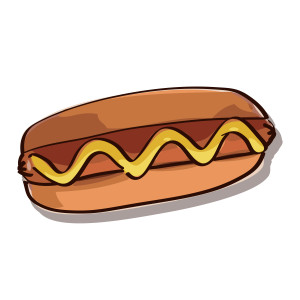By David Wolf, Attorney
Published by Child Injury Lawyer Blog

According to WebMD.Com and the American Academy of Pediatrics, hot dogs can be particularly risky for children under the age of 4.
In addition to hot dogs, other risky foods can include carrots, grapes, popcorn, nuts and seeds, hard candies, meat products, marshmallows, apples, chewing gum, and even peanut butter chunks. Because those food items are so common, it is important that parents, caregivers, and day care center workers are on the look out for these food groups and other foods that may prove difficult for an infant, toddler, and small children to safely consume. This is especially true for schools and day care centers in which children can bring in their own lunches and food items. What may be safe for one child to eat may prove to be quite dangerous for another child. Because of this, it is important for child care providers / day care center providers to closely monitor what is being brought into the school, how the food items are stored, and how the food items are consumed. What may appear as innocent food sharing between classmates can prove to be quite risky and deadly for that matter.
It is estimated that 60 – 70 children under the age of 10 die each year as a result of choking related deaths. Another disturbing figure is that over 10,000 children under the age of 15 are seen in emergency rooms every year as a result of choking related incidents.
The best way to prevent a choking incident from harming a small child is to make sure that all items that may cause a choking episode are kept out of the reach of the child. This includes the aforementioned foods, coins, batteries, small toy parts, and other items. Of course, it is unrealistic to expect that there will never be another choking episode again in the future. If a choking incident happens, it is important for child care providers to recognize the symptoms and the distress of the child in a timely manner. Thereafter, back blows and chest compressions may be necessary for a infant less than 1 year old. For children older than one, the Heimlich Maneuver may be performed. At times, a simple finger probe of the mouth may be successful in removing the object. It is important for child care providers to undergo basic life support training to be ready to act when a choking situation arises.
If a child is injured due to the negligence of a day care center, school, or other child care provider, the parents of the injured child should see the advice, guidance, and representation from a Child Injury Lawyer. The basic elements of a case include the following elements:
1. Duty;
2. Breach of Duty;
3. Causation; and
4. Damages
A trained and experienced Child Injury Lawyer can review the facts and circumstances to determine if the following elements are met and if it makes sense from a practical standpoint to pursue a case or claim for the injuries to the child.
The book titled – The ABCs of Child Injury – Legal Rights of the Injured Child – What Every Parent Should Know – has chapters on School Injuries, Day Care Center Injuries, Playground Injuries, and other topics. You can get this book for free at The ABCs of Child Injury.
